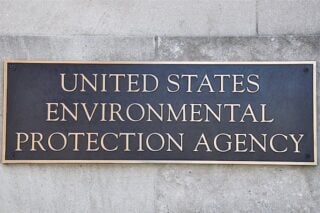A former Avondale Shipyard employee, named Claude Gordon Jr., is suing for negligent exposure to asbestos. He claims that during the ten years he was employed there from 1963 to 1974, he was breathing asbestos fibers, which resulted in his silicosis diagnosis.
If asbestos becomes friable, or broken, millions of microscopic fibers are released into the air. The most common source of airborne asbestos is from the numerous building materials used over the past century, which are still present in older buildings and sea-going vessels.
Mostly this occurs in the form of insulation and pipe lagging. When solid, it poses little health threat. But over time, the insulation can become brittle and begin to crumble. That’s when the fibers are released and mesothelioma cancer can eventually ensue—a fatal cancer that has no cure.
Gordon says the exposure and eventual illness were caused by his continued silica and asbestos exposure, which needs to be monitored because, as mentioned above, it could lead to mesothelioma cancer. At Avondale Shipyard, Gordon chopped, grinded, sandblasted, and painted the main Avondale shipyard, Harvey yard, and aboard vessels such as Navy destroyers.
Avondale Shipyards, a subsidiary of Huntington Ingalls Industries, was once one of the largest shipbuilders in the U.S. The company was located on the West Bank of the Mississippi River in Avondale, Louisiana and employed over 5,000 people to work on ocean-going vessels for military and commercial markets.
Unfortunately, Avondale Shipyards also had a history of asbestos use. Many of its ships, including the USS Bowen, USS Brewton, USS Ouellet, and even more contained asbestos. In 2011, another former employee, Leopold Granier Jr., was awarded $1.5 million in general damages for being exposed on the job and developing mesothelioma as a result.
Many more workers besides Granier and Gordon were probably exposed to asbestos on a somewhat regular basis, but because it can take anywhere from 20 to 50 years to develop, it’s possible Avondale Shipyard will face more lawsuits from former employees in the near future.
The case will be heard by Division B Judge Cornelius E. Regan in the 24th Judicial Court as the plaintiff has been accused of failing to give and require respirators and other protective equipment as well as having a respiratory program. Not warning of the dangers of inhaling asbestos fibers, not conducting air monitoring up to standards, and not isolating work activities involving asbestos.
Other reasons include leaving safety responsibilities to employees on their own, failing to protect the health and safety of employees with the right measures, and not creating a safety program to warn of silica and asbestos particle exposure.
Gordon can potentially win damages for physical and mental pain and suffering, discomfort, and medical expenses as well as both economic and enjoyment loss of life.





